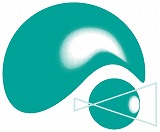Photo: ©KOBE CONVENTION & VISITORS ASSOCIATION
Tutorials
There are six tutorials in parallel; 1 morning and 2 afternoon sessions. You can attend the tutorials FREE of charge, without registration.
|
Lihong Zhi Chinese Academy of Sciences, CHINA |
Symbolic-numeric algorithms for computing validated resultsAbstract: In the tutorial, we will introduce two kinds of problems for which validated results are computed via hybrid symbolic-numeric algorithms: 1) certification of lower bounds of polynomials or rational functions with or without constraints; 2) verification of solutions of polynomial systems. The proposed hybrid algorithms follow the basic principle pointed out by Siegfried M. Rump for computing validated results: First, a pure floating point algorithm is used to compute an approximate solution of good quality for a given problem. Second, a verification step using exact rational arithmetic or interval arithmetic is appended. If this step is successful, then certified lower bounds or verified error bounds are computed for the previously computed approximation. |
|
Mitsushi Fujimoto Fukuoka University of Education, JAPAN |
How to develop a mobile computer algebra systemAbstract: Historically, a lot of computer algebra systems were designed to have a
command line interface, then GUI was added if required. AsirPad -- a computer
algebra system with a handwriting interface on PDA developed by the author is
one of them. Risa/Asir -- a CAS with a command line interface is the CAS
engine of AsirPad, and AsirPad is created by covering it with GUI. |
|
Francois Le Gall University of Tokyo, JAPAN |
Algebraic Complexity Theory and Matrix MultiplicationAbstract: This tutorial will give an overview of algebraic complexity theory focused on bilinear complexity, and describe several powerful techniques to analyze the complexity of computational problems from linear algebra, in particular matrix multiplication. The presentation of these techniques will follow the history of progress on constructing asymptotically fast algorithms for matrix multiplication, and include its most recent developments. |
|
Hirokazu Anai Fujitsu Laboratories/Kyushu University, JAPAN |
Effective quantifier elimination for industrial applicationsAbstract: In this tutorial, we will give an overview of typical algorithms of quantifier elimination over the reals and illustrate their actual applications in industry. Some recent research results on computational efficiency improvement of quantifier elimination algorithms, in particular for solving practical industrial problems, will be also mentioned. Moreover, we will briefly explain valuable techniques and tips to effectively utilize quantifier elimination in practice. |
|
Hidefumi Ohsugi Kwansei Gakuin University, JAPAN |
Gröbner bases of toric ideals and their applicationAbstract: The theory of Gröbner bases has a lot of application
in many research areas, and is implemented
in various mathematical software.
Among their application, this tutorial will focus
on basic and recent developments
in the theory of Gröbner bases of toric ideals.
In 1990's, several breakthroughs on toric ideals were done:
Conti--Traverso algorithm for integer programming
using Gröbner bases of toric ideals;
Correspondence between regular triangulations of
integral convex polytopes and Gröbner bases of toric ideals;
Diaconis--Sturmfels algorithm for Markov chain Monte Carlo method
in the examination of a statistical model using a set of generators of
toric ideals.
|
|
Hiroyuki Goto Hosei University, JAPAN |
An introduction to max-plus algebraAbstract: This tutorial will focus on the basics of max-plus algebra along with relevant topics. Max-plus algebra is a discrete algebraic system in which the max and plus operations are defined as addition and multiplication in conventional algebra. Using this system, the behavior of a class of discrete event systems can be represented by simple linear equations, by which modeling, analysis, and control of the systems can be realized. We will start with a simple project scheduling problem to understand the basic usage of max-plus algebra. The focus will then be oriented to its detailed definition and observe relevant properties in terms of graph theory, net theory, and so on. In the latter part, we will move on to modeling and formulation methods in control theory viewpoint. Several application examples as schedule solvers will be introduced, followed by several recent advances achieved by the presenter. |










